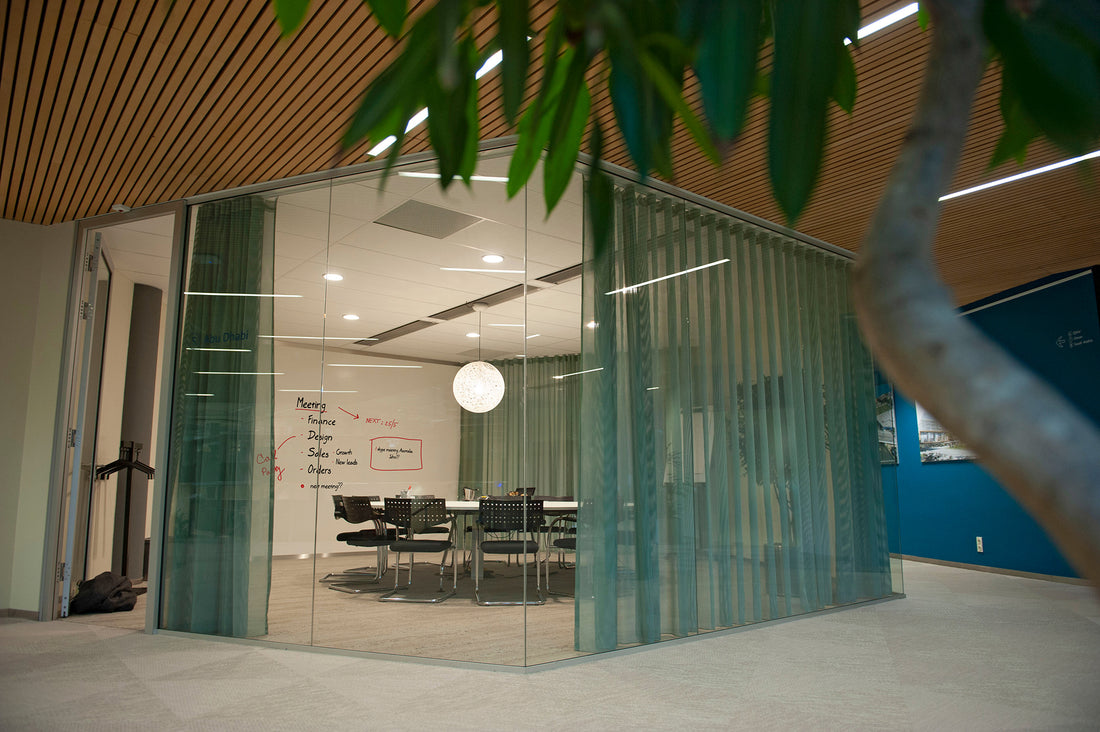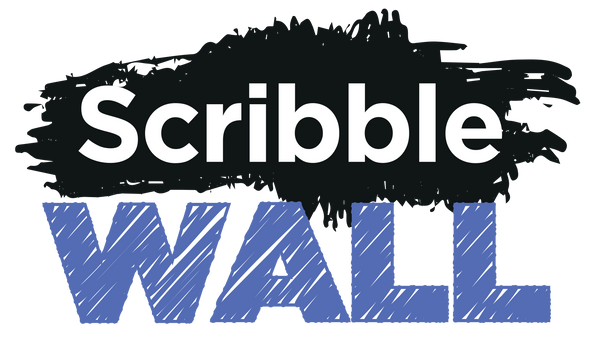
Office within an office
Danielle BrownShare
We love the use of whiteboard paint in this partitioned office. The glass walls are really cool and create a private area within an open space for an office-within-an-office.
The full wall is painted with whiteboard paint to create a really useful space for scribbling during meetings.
What are the benefits of an office whiteboard wall..
Whiteboards are useful in a meeting room for several reasons:
- Visual Communication: Whiteboards allow participants to visually communicate ideas, concepts, and information. They are particularly effective for illustrating complex concepts, diagrams, charts, and graphs. Visual aids can help convey information more clearly and make meetings more engaging.
- Collaboration: Whiteboards promote collaboration among meeting participants. Multiple people can contribute to the whiteboard simultaneously, whether by drawing, writing, or adding notes, which encourages brainstorming and idea sharing.
- Flexibility: Whiteboards offer flexibility in terms of content. You can easily erase and modify information on a whiteboard, making it adaptable to the flow of the meeting and allowing for quick adjustments and refinements to ideas.
- Real-Time Interaction: Whiteboards support real-time interaction and discussion. As information is added or modified on the board, it can stimulate conversation and lead to deeper exploration of topics.
- Visual Memory Aid: Visual information tends to be more memorable than spoken words alone. Using a whiteboard to capture key points, action items, or important data can help meeting participants remember and retain information more effectively.
- Problem Solving: Whiteboards are often used for problem-solving sessions, enabling teams to analyze issues, outline solutions, and sketch out plans. This visual approach can lead to more comprehensive problem-solving and decision-making.
- Record Keeping: Whiteboards provide a temporary record of the meeting's proceedings. Although not a permanent record, it can be helpful to take a photo of the whiteboard before erasing it to document what was discussed and decided during the meeting.
- Non-Verbal Communication: Sometimes, non-verbal elements like diagrams, arrows, or colour-coded information can convey meaning that words alone cannot. Whiteboards allow for these non-verbal forms of communication.
- Engaging Tool: Whiteboards can make meetings more engaging and interactive, reducing the risk of participants becoming disengaged or distracted.
- Cost-Effective: Compared to digital alternatives like interactive displays or electronic whiteboards, traditional whiteboards are often more cost-effective to install and maintain.

Get The Look
-
1. First you need to make sure that the surface you are coating in whiteboard paint is as smooth as possible. Fill in any holes or imperfections and sand to a smooth flat finish 2. Prime the surface with a white primer. 3. Ensure the surface is clean and free of dust or grease. 4. Whiteboard paint is provided as a two-part formula. Once you mix the components together you have one hour to apply the paint to the wall before it begins to cure. For best results make sure you have everything ready before mixing the components together. 5. Mix the two parts and stir well 6. Once fully combined you can apply the whiteboard paint to the surface with a roller in even strokes. 7. Allow the surface to cure for 5 days - this is a very important step to optimise the surface for long lasting use. 8. After the surface is cured you can write on / wipe off with good quality dry erase whiteboard pens!
How to install...
Grab yourself a tin of whiteboard paint today!

